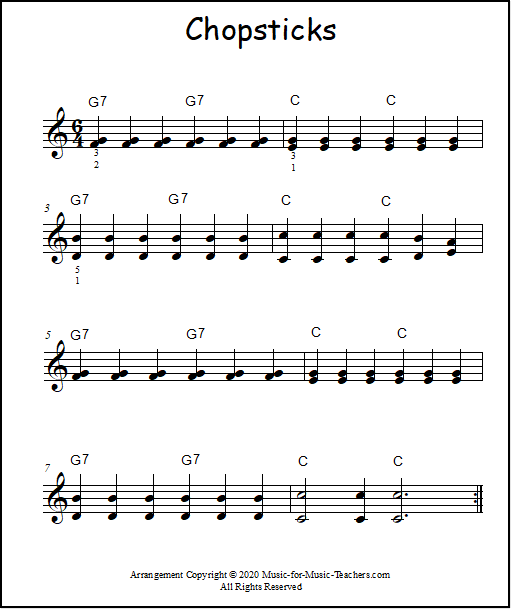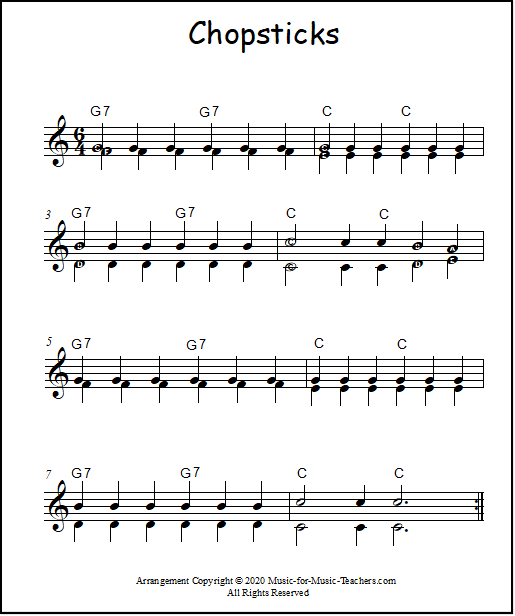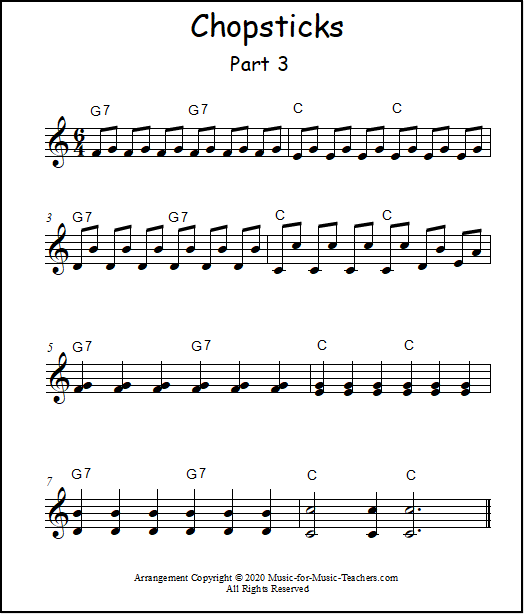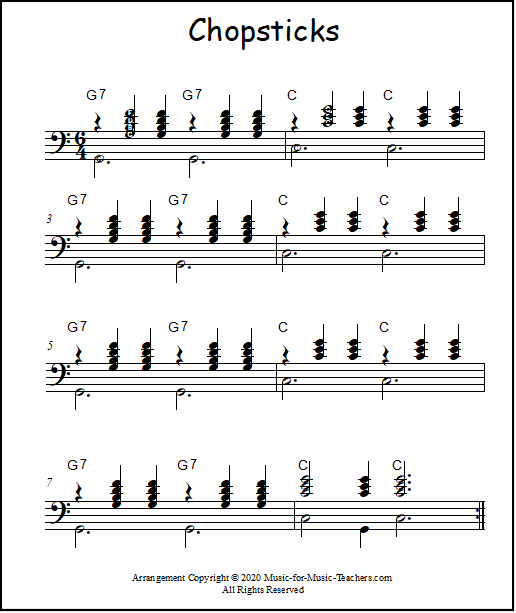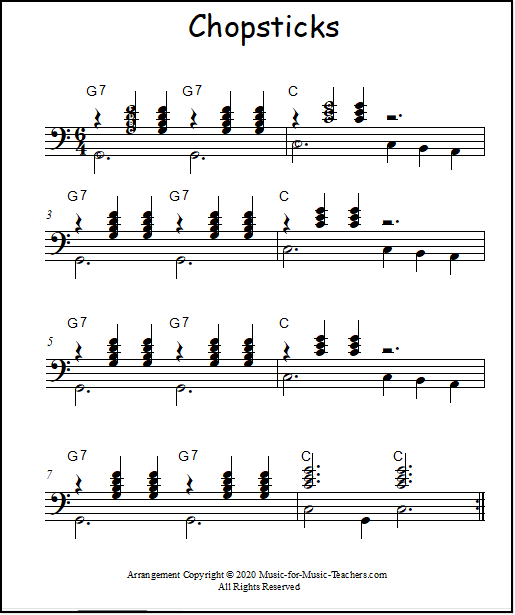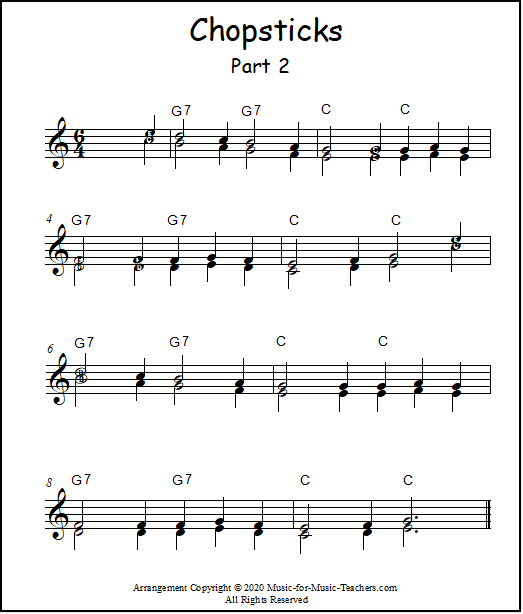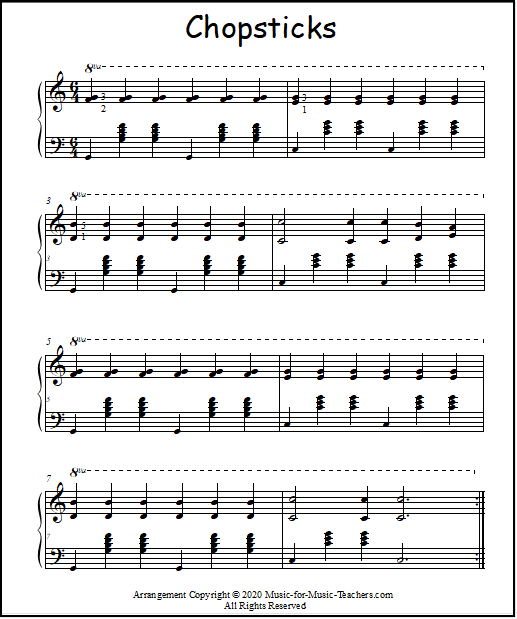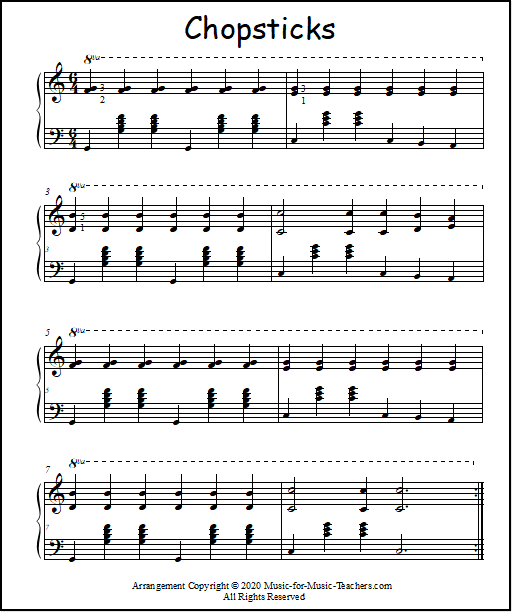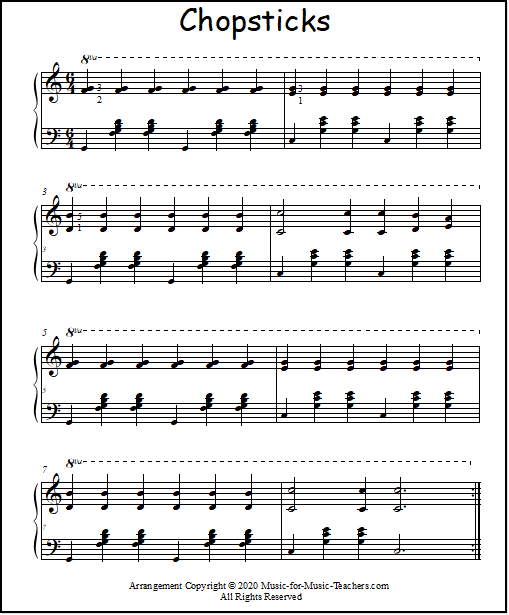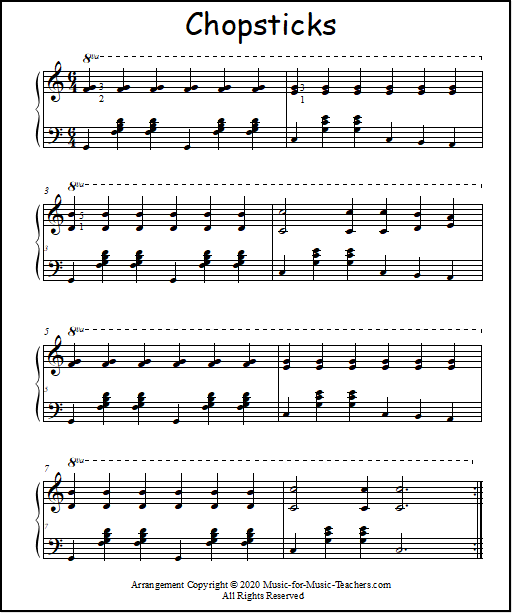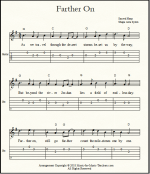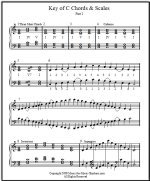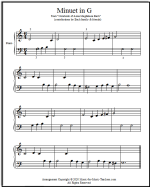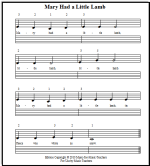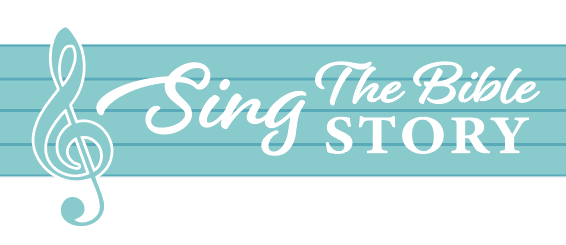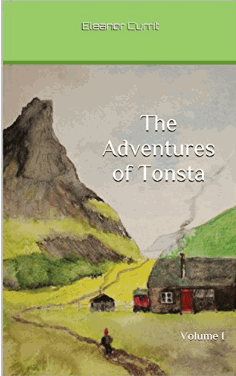Chopsticks Music
Piano Duets & Solos
Chopsticks music is easy to play by rote - incorrectly! Sharpen up your students' abilities with duet & solo sheets showing chords & accurate melodies.
Below are several arrangements that represent the most familiar versions of Chopsticks, and now, Parts 2 AND 3!
Start with the melody - make a duet
Please scroll down the page for the download links.
Everybody thinks they know it already
It's funny how many kids THINK they know how to play Chopsticks! Almost uniformly, kids play what they think is the pattern, with 5 beats, or 7 beats, per note cluster. Also, they progress straight out from the first melody note (G) to an A, instead of holding on to the G through the first measure of C chords.
Please scroll down the page for the download links.
Separate voices, separate hands
The first sheet, above, shows "soprano" and "alto" voices, or right and left hand index fingers playing the notes. That is why I have arranged the note stems up, or down. (I always call index fingers "pointer fingers" for my students.)
This is truly the easiest way to play the Chopsticks piano music, though you may be surprised at students' hesitancy over some of the notes, even with "helper" AlphaNotes inside the note-heads. I think this is because they are expecting to hear something a little different. Like all "folk" or "traditional" music, variations will be found.
I found it helped to cover their hands for some of the notes, so they were forced to look up at the "music map."
For students with more ability...
Please scroll down the page for the download links.
As you can see, the eighth notes will require some extra coordination, whether students are playing this as a duet, or as a solo!
However, I have been playing Part 3 with my students as they play the chords, so they already have the melody and rhythm burned into their brains (I hope). This is new, uncharted territory, as this Part 3 sheet was just completed a few days ago!
How to play the Chopsticks chords
Please scroll down the page for the download links.
The chord pages - or secondo duet parts - differ slightly. Above, you see root position chords. That is, a G7 chord which has "G" on the bottom of the chord, and a C chord that has "C" at the base of the chord.
G7 is a big chord, but getting familiar with this chord is actually my primary reason for introducing Chopsticks to my students. They know the little G7 "pinch chord" from their early songs such as Mary Had a Little Lamb; here, they will encounter and learn well the full chord. Then they can transfer that knowledge over to other keys.
A walking bass
Not too much harder to play, here is a descending bass line.
Please scroll down the page for the download links.
The "walking bass" gives energy and direction to the music, and keeps it from being all the same.
There is more to Chopsticks
Please scroll down the page for the download links.
This pretty little melody looks harder than it is - all the notes move stepwise, or are repeated notes. It follows very nicely after the main theme.
All together now - make it a solo!
Once students are very smooth with the separate parts, and can play the primo all with one hand (the stretch of the octave is a determining factor), and the secondo all with one hand, then it's time to put the parts together.
Here it is, with the chords as repetitious as they can be:
Please scroll down the page for the download links.
The walking bass in the solo:
Please scroll down the page for the download links.
Harder: left hand chord inversions
Please scroll down the page for the download links.
Now we're talking about some skill - and some music theory too! With chord inversions in the left hand, the next step will be some (very easy) Chopin waltzes! Can your students recognize chords when they are in inverted form?
Help prepare them with my scales and chords pages...
Please scroll down the page for the download links.
The free piano sheet music, Chopsticks:
The links to the duets:
Download the easy shared-hands melody
Download Chopsticks music lead sheet, the same melody all with one hand
Download the Chopsticks piano music bass clef secondo part
Download Chopsticks song secondo with walking bass
Download the different melody, Part 2
The links to the solos:
Download the solo with plain root position chords
Download the solo with root position chords plus a walking bass
Download the solo with left hand chord inversions
Download the solo with left hand chord inversions plus a walking bass
Dianna:
Your website is a light in the darkness. THANK YOU for all you do in helping to spread the love of music. It matters!
Recent Articles
-
Moonlight Sonata in Cm
Hello! Thank you for sharing the introduction to Beethoven's Moonlight Sonata in C minor! It will be a good trial for a certain student. Can you make -
Farther On, a Beautiful Shape-Note Hymn: vocal ensemble & instruments
Farther On is a beautiful Shape-Note hymn in the Sacred Harp tradition. Download this free hymn sheet music for ensemble, guitar, piano, & lead sheet. -
12 Major Scales Free Download for Piano: Chords, Arpeggios & Scales
12 major scales & chords: free, printable downloads. One & two-octave scales, I, IV & V chords & inversions & arpeggios, & a new PART 2! -
Bach Minuet in G Piano Music: Arrangements for All Levels
The Bach Minuet in G is a famous piece that kids enjoy playing - now with six arrangements, all of your students can conquer this piece. -
Mary Had a Little Lamb for Beginner Piano: Learn How to Add Chords
There is so much you can do with Mary Had a Little Lamb! As piano music for kids, it is unbeatable for showing them how to use chords.
Interested in songs from the Bible for your students or church? Check out my other website, SingTheBibleStory.com!
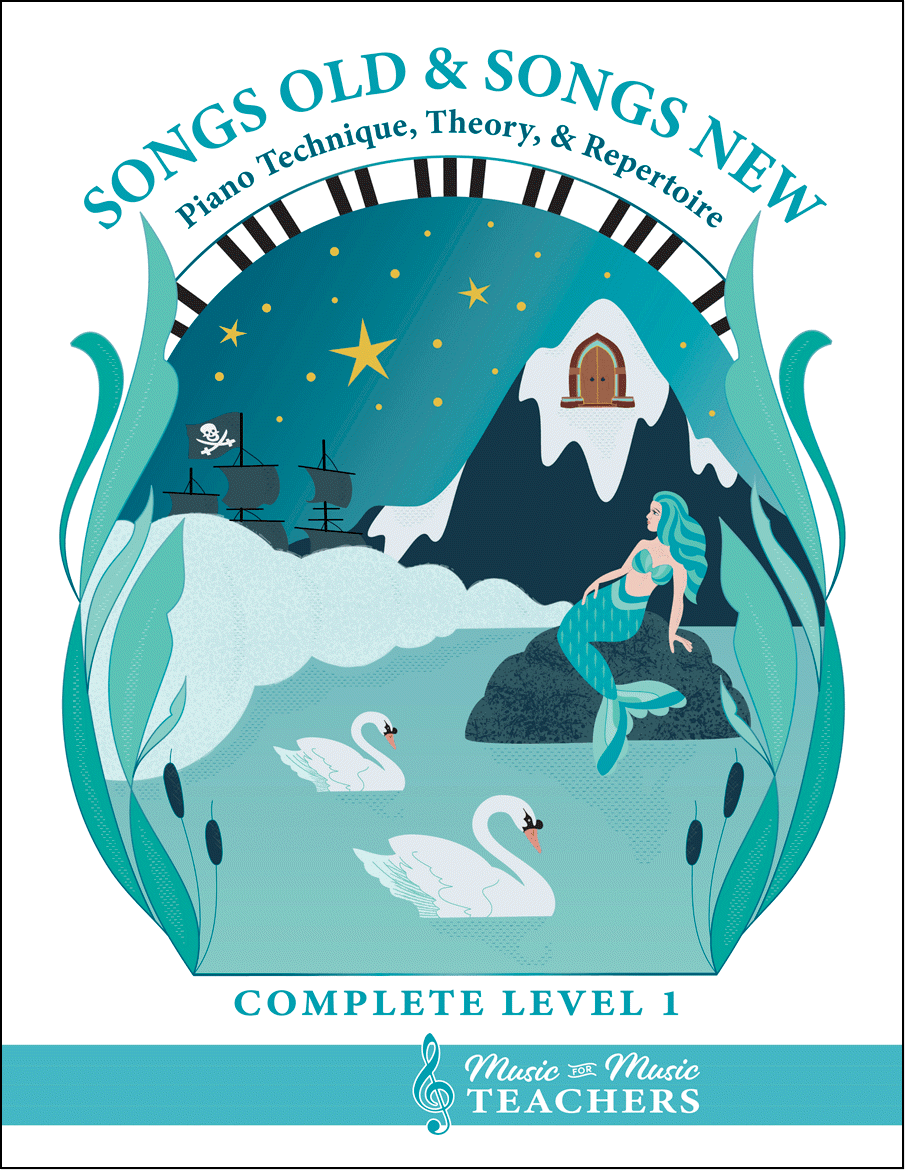
All the first-year material I give my beginner students.
Piano keyboard sheets, scales, chords, note-reading exercises, and over 256 pages of music!
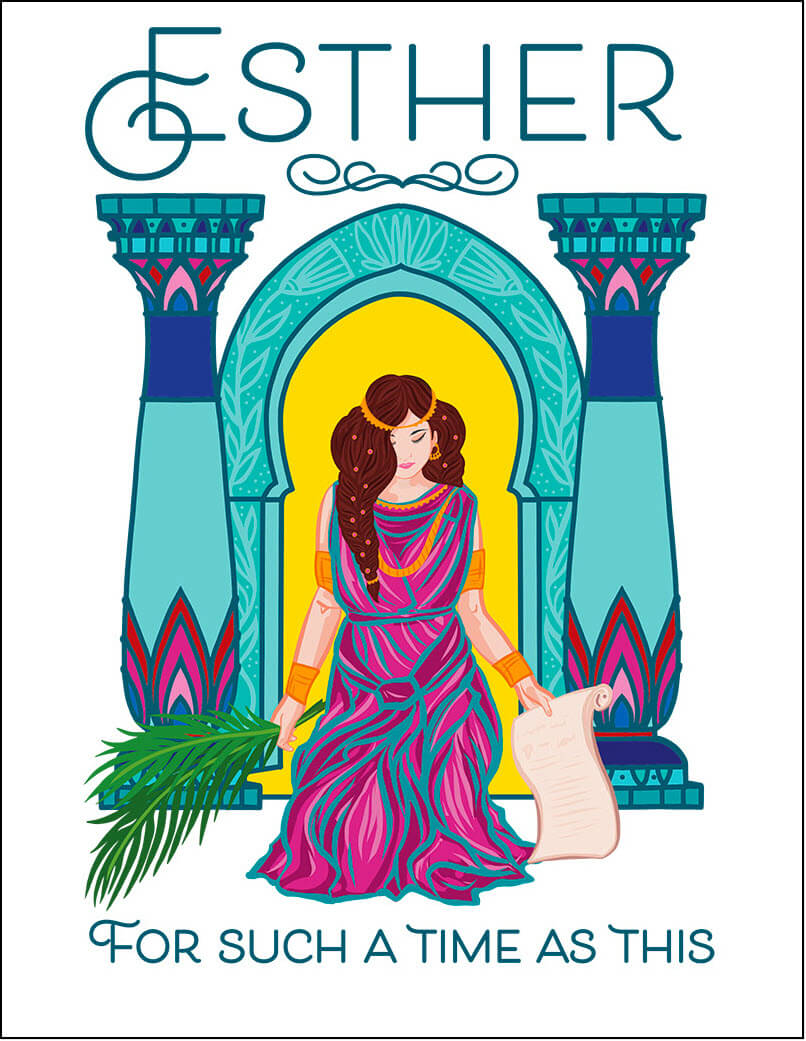
This beautiful song book for piano & voice "Esther, For Such a Time as This", available as a digital download, tells the riveting story of the time when Jews in ancient Persia faced a foe named Haman, and how a brave young queen risked her life to save her people.
A good choice for a singing story-teller, an operatic group, a short theater production, or a class of children!
This book is also available from Amazon as a paperback.
This book is available as a digital download from this site. Visit this page to see some free examples from the book.
It is also available from Amazon as a paperback!
This is the perfect easy start for little pianists.
And when they start reading white-key notes on the staff, this is a fun easy resource to say each week, "Choose a new black-key song at home this week and figure it out to show me next lesson!" They will be spending more time at the piano.
A perfect read aloud storybook
for little boys or girls.
The Adventures of Tonsta highlight the travels of a very young boy with a good heart, who goes about helping folk in trouble.
With a red cap on his head and a sack of tools slung over his shoulder, Tonsta seems to meet people in distress wherever he goes.
Lots of trolls in this book - including one who gives him a Christmas gift!
About the Author

Hi, I'm Dana! (Say that like "Anna".) I'm the owner of Music-for-Music-Teachers.com, and a newer site, SingTheBibleStory.com.
Like some of you, I've been playing the piano since early childhood, and have added a few other instruments along the way, plus an interest in arranging and composing music.
You can find out more about me and the reason for this website at my About Me page.
